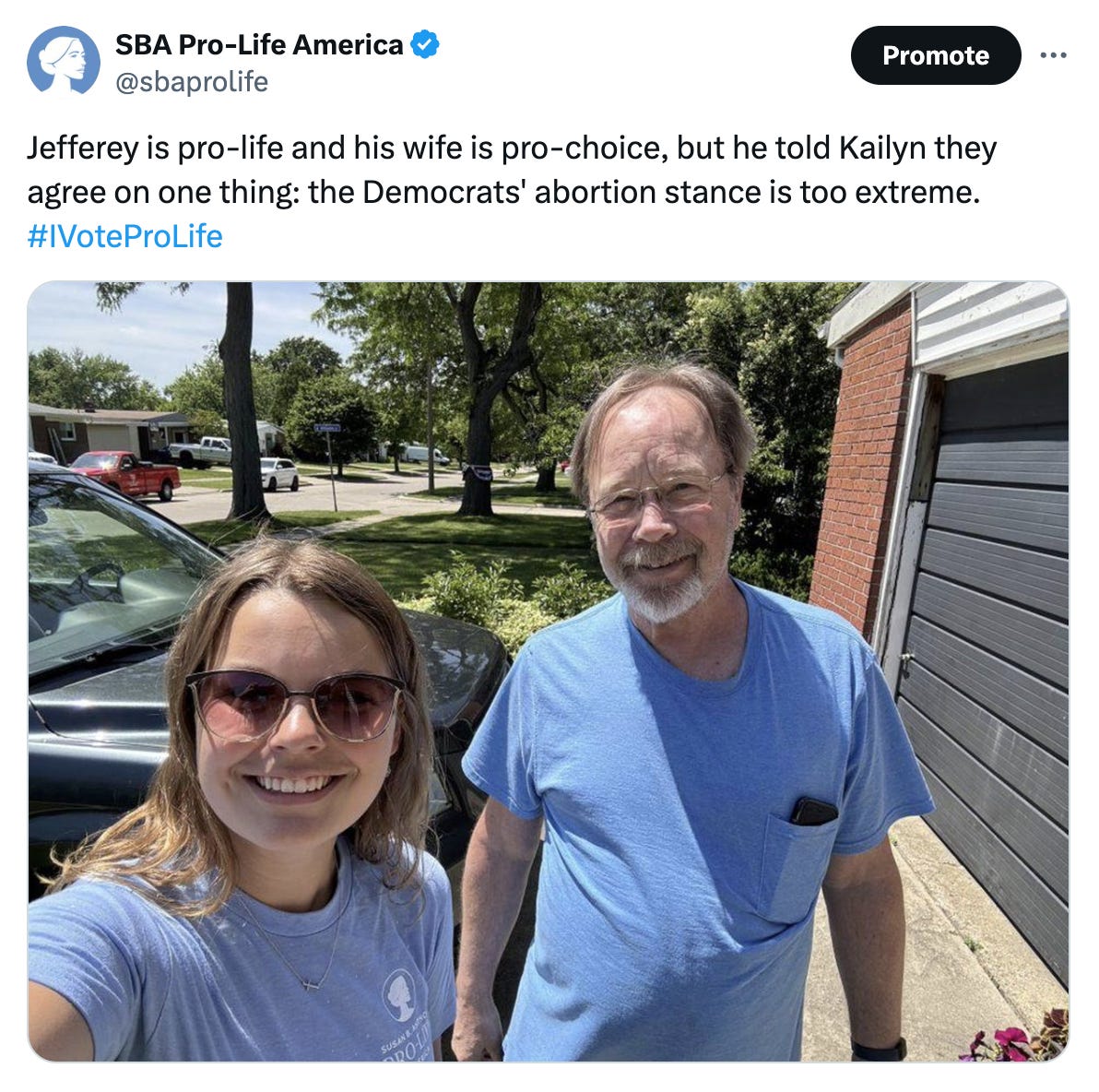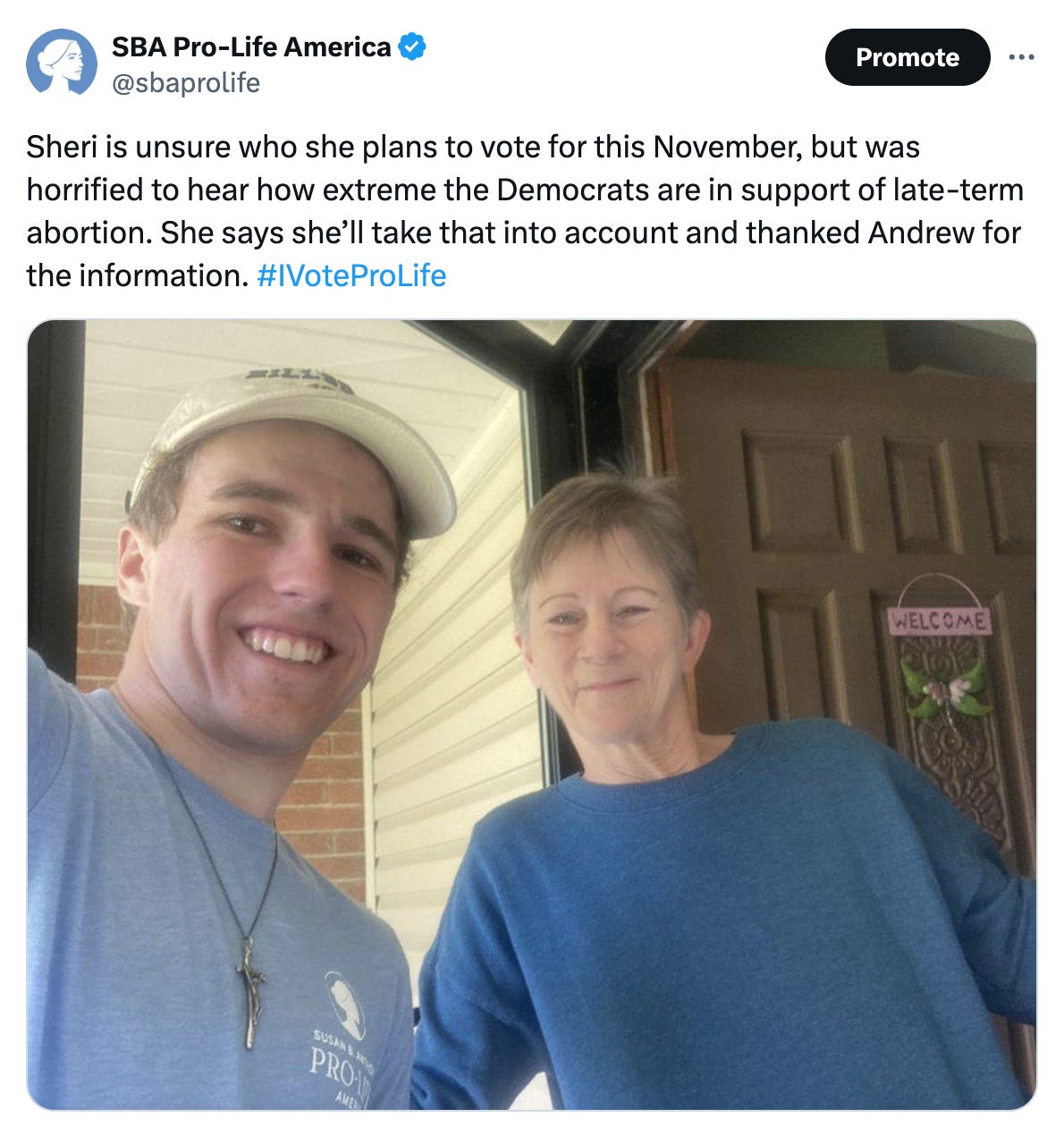Americans Don’t Want the Kamala Harris Abortions Up to Birth Agenda
With Kamala Harris at the helm, the Democratic Party more than ever has become the “Shout Your Abortion” party – but even in the legacy media, not everyone seems convinced this strategy is an election winner. The New York Times’ David Leonhardt recently offered a few caveats: “There is polling evidence to suggest abortion can move swing voters, […]
The post Americans Don’t Want the Kamala Harris Abortions Up to Birth Agenda appeared first on LifeNews.com.
With Kamala Harris at the helm, the Democratic Party more than ever has become the “Shout Your Abortion” party – but even in the legacy media, not everyone seems convinced this strategy is an election winner.
The New York Times’ David Leonhardt recently offered a few caveats: “There is polling evidence to suggest abortion can move swing voters, but it appears to be tougher to do so than some Democrats believe.” He notes, “Still no incumbent GOP gov or senator has lost since Dobbs.”
Previously before Dobbs, Leonhardt looked at what we know about Americans’ views on abortion and the limitations of polling. His conclusions are worth revisiting:
Abortion “access” tends to be an elite preoccupation.
“Working-class Americans often favor restrictions,” wrote Leonhardt. Put more explicitly, abortion views and income are correlated, and not in the way abortion advocates would have us believe.
Writing for Slate (hardly a right-wing outlet), Will Saletan burst the Democrats’ bubble after then-candidate Joe Biden flip-flopped and came out in favor of taxpayer-funded abortion:
Many opponents of the Hyde Amendment see it as a class issue. That’s how a Biden adviser made the case in pressing the former vice president to change his position. But there’s little evidence that people of limited means see it that way. In the 2017 Marist poll, among people with annual incomes of $50,000 or more, the margin of opposition to tax-funded abortions was 16 percentage points. Among people who earned less than $50,000, the margin of opposition was 32 points. In the YouGov poll, respondents with lower incomes were less likely than respondents with higher incomes to support federal and state funding of abortions. And in the Harvard poll, support for Medicaid funding of abortion was almost twice as high among voters who earned more than $75,000 as among voters who earned $25,000 or less.
While we would hope everyone could support human rights, it might not be a coincidence that the Democratic Party has become stridently pro-abortion around the same time The Nation (also not a right-wing outlet) asked, “Have Democrats Become the Party of the Rich?”
Click Like if you are pro-life to like the LifeNews Facebook page!
Roe v. Wade isn’t representative of Americans’ complex views.
The most confounding aspect of public opinion is a contradiction between Americans’ views on Roe itself and their views on specific abortion policies: Even as most people say they support the ruling, most also say they favor restrictions that Roe does not permit…less than 30 percent of Americans say that abortion should “generally be legal” in the second trimester, according to Gallup. Many people also oppose abortion in specific circumstances — because a [baby] has Down syndrome, for example — even during the first trimester.
Under Roe, the United States was one of a handful of countries to allow elective late-term abortion more than halfway through pregnancy, along with some of the world’s worst human rights violators. In 2017, The Washington Post deemed this statement to be “surprisingly” true. When Kamala Harris and other Democrats refer vaguely to “restoring Roe,” that is what it means in reality.
Today, despite 24 states enacting protections for unborn children, our country remains in an ignoble minority. At least seven states plus Washington, D.C. have no gestational limits on abortion. Yet the default posture of Democratic politicians and many in the media when confronted with this fact is, still, denial.
Most Americans have never embraced a zero-limits agenda.
Attitudes toward abortion show a high degree of stability, Leonhardt points out:
Opinion on some major political issues has changed substantially over the last half-century. On taxes and regulation, people’s views have ebbed and flowed. On some cultural issues — like same-sex marriage and marijuana legalization — views have moved sharply in one direction.
But opinion on abortion has barely budged.
Going back all the way to 1975, the survey data cited by Leonhardt shows abortion on demand for any reason, at any point throughout pregnancy, has always been a minority position. This holds true of the large swath of Americans in the political and ideological middle, even after Dobbs. Last November, Harvard-Harris found 73% of voters would limit abortions by no later than 15 weeks. Meanwhile NPR and Gallup found only about one in five Americans agreed with allowing third-trimester abortions, with two thirds favoring a limit after the first three months. And this summer, AP-NORC found more respondents said their state should not allow third-trimester abortion than in 2022, with support for limits at 15 weeks holding steady. Where pro-abortion sentiment has increased, it is almost exclusively among the already pro-abortion Left.
Women and men aren’t much different on abortion – millions of women support limits.
Leonhardt’s next point comes as no surprise to anyone who knows the well-documented pro-life stance of America’s pioneering feminists:
Most women voted for Joe Biden, while most men voted for Donald Trump. On many issues, like gun control and the minimum wage, there is a large gender gap.
But the gap on abortion is not so large. If anything, it seems to be smaller than the partisan gap. That suggests, perhaps surprisingly, that there are more Democratic-voting women who favor significant abortion restrictions than Republican-voting women who favor almost universal access — while the opposite is true for men.
In the NPR poll, 77% of Independent women, 46% of Democrat women and 71% of suburban women would limit to the first three months at most.
Again, overly broad poll questions can fail to capture nuanced views accurately:
When people are asked whether they identify as “pro-choice” or “pro-life,” both the gender and age gaps grow. Those terms appear to prime people to think as Democrats or Republicans, rather than thinking through the details of their own policy views.
More warning bells for Democrats
Anecdotal evidence also suggests even self-identified pro-choice women are getting turned off: “This rhetoric used to be effective on me. But the abortion obsession is creepy and offensive.” (You’ll want to read it all.) Now, Democrats like Pete Buttigieg are openly admitting that abortion is a lot less about women’s rights than they’ve often claimed. Combined with what our canvassers hear every day in neighborhoods across America, as we work to reach a total of 10 million voters in eight battleground states, we know this issue has the power to change minds and votes.
David Leonhardt is right. Abortion Czar Kamala Harris has pitched herself as America’s tough prosecutor, politically speaking. But if the Democrats are smart, they’ll hear the alarms and see the flashing lights approaching in their own rear-view mirror.


LifeNews Note: Courtesty of SBA ProLife. This column originally appeared at the SBA ProLife Substack.

The post Americans Don’t Want the Kamala Harris Abortions Up to Birth Agenda appeared first on LifeNews.com.
